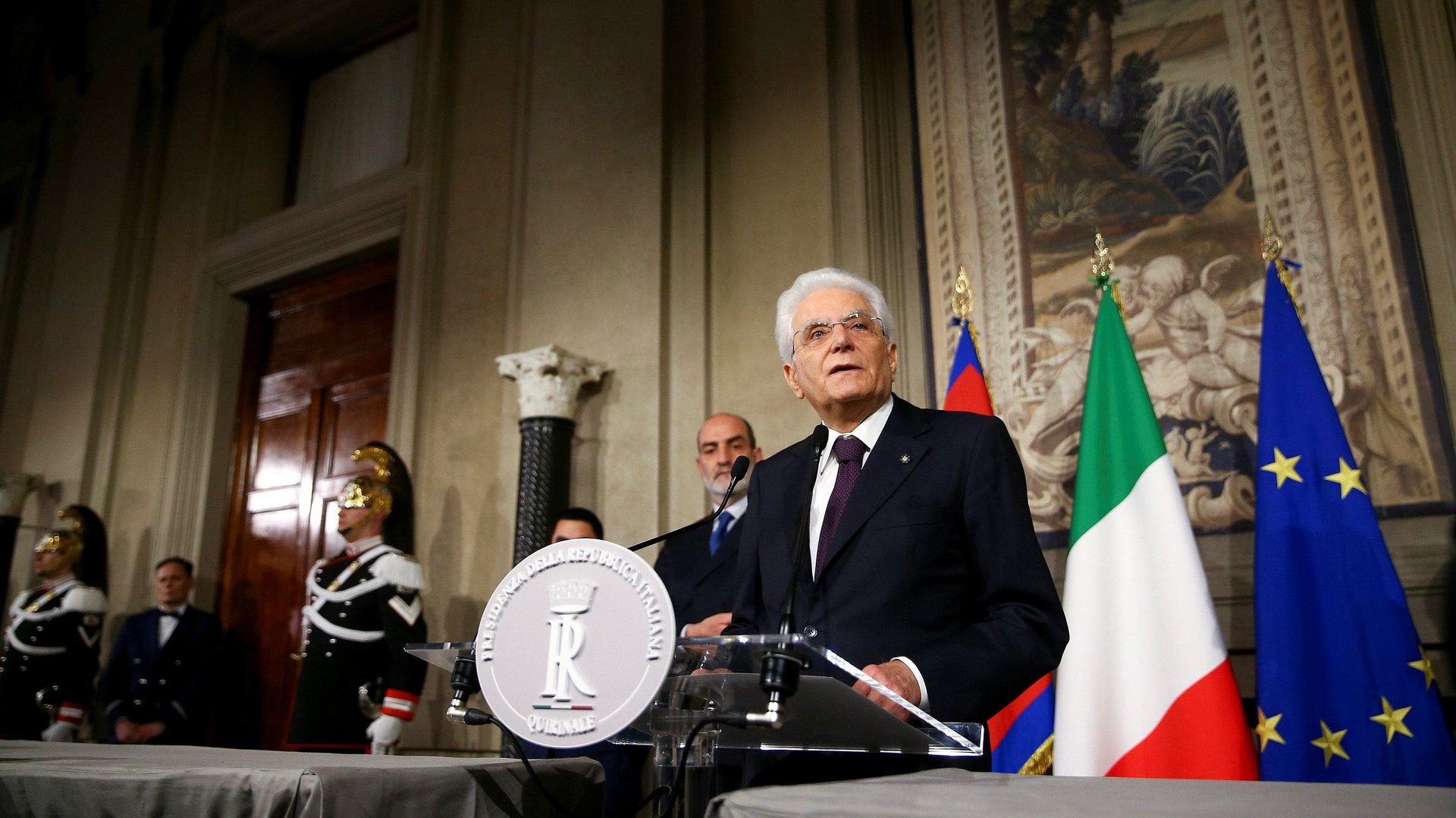Traders can hardly keep up with Italy’s convoluted political drama
When Italians went to the polls in early March and mostly split their votes between two populist parties—Five Star Movement and the League—markets barely blinked. As months of coalition negotiations dragged on and Italy went without a government, traders yawned. It seemed the general strength of the global economy, and the belief that the European Central Bank would never let things get too bad, was strong enough to keep things on an even keel.


When Italians went to the polls in early March and mostly split their votes between two populist parties—Five Star Movement and the League—markets barely blinked. As months of coalition negotiations dragged on and Italy went without a government, traders yawned. It seemed the general strength of the global economy, and the belief that the European Central Bank would never let things get too bad, was strong enough to keep things on an even keel.
All of that changed this week.
Italy’s president rejected the populist coalition’s choice of finance minister, arguing that his anti-euro statements in the past suggest that he may harbor a plan to “probably, or even inevitably, provoke Italy’s exit from the euro.” The parties proposing to form a government protested the snub, declaring that they weren’t going to form a coalition after all. The president instead picked a technocrat and budget-conscious former IMF official nicknamed “Mr. Scissors” to try to form a government under him as prime minister. Suddenly, there were calls to impeach the president, a snap election seemed inevitable, and Italy’s continued membership in the euro zone was suddenly looking uncertain.
Markets woke up. It was like a rerun of the days of Europe’s sovereign debt crisis. As bond prices plummeted, yields on Italy’s two-year bonds shot up sharply. (Prices move inversely to yields.) They reached a high of 2.8% two days ago. Yields on 10-year bonds, meanwhile, climbed to the highest since early 2014.
The market turmoil spread to other southern European countries, like Portugal. Everyone looked to the ECB to see if things would get bad enough to warrant intervention to quell the turmoil, like the bad old days.
Then, almost as quickly, the panic started to subside.
The president got the League and Five Star back together for more coalition talks which, if they succeed, could avoid going back to the polls this year. Both parties stressed that they don’t intend to take Italy out of the euro, despite previous calls for a referendum on the issue. Two-year bond yields fell below 1% in intraday trading, and Italian bank stocks have recovered some of their recent losses.
Still, Italian markets aren’t exactly back to normal. A government still hasn’t taken shape and the populist coalition continues to call for spending policies that disregard EU rules on budget deficits. A standoff between Rome and Brussels seems inevitable.
This will keep bond traders busy, and provide the most excitement they’ve had for years. It’s been nearly six years since ECB president Mario Draghi famously said he’d do “whatever it takes” to save the euro. For more than three years, the central bank has also been buying bonds, which traders say has reduced market liquidity. Bond prices were rising steadily, as yields converged across countries and the market became, frankly, pretty boring (pdf). This wasn’t a bad thing, unless you trade bonds for a living. Now, Italy’s political drama has made things a lot more exciting.